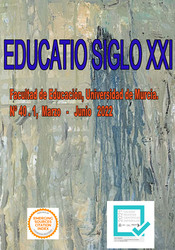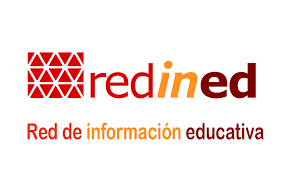A New Tool for Assessing the Understanding of Calculus by Relying on Relational and Instrumental Understanding
Abstract
The changes in high school mathematics books in recent years have led to some changes in the concept of calculus, and majority of learners used to work hard on memorizing rather than understanding. In the early years after entering university, they will be challenged by the same concepts and their application in other sciences. Review of the previous studies have shown that no research instrument has been developed to address such challenges till now. Then, the researchers of the study developed and standardized an instrument. The population consisted of all first-year undergraduate students of engineering and basic sciences fields from of University in Tehran. Using purposeful sampling technique, 162 male and female students were selected. All of them selected had passed the course of calculus 1. The researchers considered some factors and developed an instrument and finally validated it based on those components. Moreover, since there were no available tools to measure the derivative’s relational and instrumental understanding, some questions regarding the concept of derivative definition were designed and added to the end of the questionnaire. Finally, after the investigations conducted through exploratory factor analysis, a research instrument was developed and introduced to measure the understanding of the concept of derivative and its instrumental and relational understanding.
Downloads
-
Abstract1138
-
PDF689
References
Aksoy, Y. (2007). The effect of computer algebra systems on the teaching of derivative concept. Ph.D. Thesis. Gazi University, Ankara.
Apostol, T. M. (2007). Calculus, Volume I, One-variable Calculus, with an Introduction to Linear Algebra (Vol. 1). John Wiley & Sons.
Ayebo, A., Ukkelberg, S., & Assuah, C. (2017). Success in introductory calculus: The role of high school and pre-calculus preparation, International Journal of Research in Education and Science (IJRES). 3(1), 11-19.
Bahar, E. E., Rahman, A., & Minggi, I. (2012). Analisis Pemahaman Mahasiswa Terhadap Konsep Limit Fungsi di Satu Titik (Studi Kasus pada Mahasiswa Jurusan Matematika FMIPA UNM). Sainsmat, 1(2), 181–190.
Balcı, M. (2012). Genel matematik-1. İzmir: Sürat Üniversite Yayınları.
Bingölbali, E. (2010). Türev kavramına ilişkin öğrenme zorlukları ve kavramsal anlama için öneriler. M.F. Özmantar, E. Bingölbali ve H. Akkoç (Ed.), Matematiksel kavram yanılgıları ve çözüm önerileri (Gözden geçirilmiş baskı) içinde (223-255). Ankara: Pegem Akademi yayınları.
Berresford, G. & Rockett, A. (2015). Brief applied calculus. Nelson Education.
Bruner, J. (1966). Toward a Theory of Instruction. Cambridge, MA: Belknap Press.
Brown, J.S., & VanLenhn, K. (1980). Repair theory: A generative theory of bugs in procedural skills. Cognitive science, (4), 399-426.
DBE (Department of Basic Education). (2014). National Senior Certificate Examination: Diagnostic Report.
DBE (Department of Basic Education). (2015). National Senior Certificate Examination: Diagnostic Report.
Denbel, D.G. (2015). Some Conceptual Difficulties of Students on Derivation. Journal of Educational and Management Studies, 5(4), 211-214.
Desfitri, R. (2016). In-Service Teachers’ Understanding on the Concept of Limits and Derivatives and the Way They Deliver the Concepts to Their High School Students, Journal of Physics: Conference Series 693, 012016, 1-9.
Davis R.B., & Mcknight, C.C. (1979). Modeling the processes of mathematical thinking. Journal of children’s mathematics behavior, (2), 91-113.
Dienes, Z.P. (1971). Building up mathematics (4th ed). London: Hutchinson.
Fuentealba, C., Badillo, E., Sánchez-Matamoros, G., Cárcamo, A. (2019). The Understanding of the Derivative Concept in Higher Education. EURASIA Journal of Mathematics, Science and Technology Education, 15(2), 2-15.
Gagne, R.M. (1977). The conditions of learning. New York: Holt, Rinehart & Winston.
Grabiner, J. V. (1983). The changing concept of change: the derivative from Fermat to Weierstrass. Mathematics Magazine, 56(4), 195-206.
Gür, H., & Barak, B. (2007). Ortaöğretim 11. sınıf öğrencilerinin türev konusundaki hata örnekleri. Educational Sciences: Theory & Practice, 7(1), 453-480.
Haapasalo, L. & Zimmermann, B. (2015). Investigating mathematical beliefs by using a framework from the history of mathematics. In: C. Bernack-Schler, R. Erens, T. Leuders & A. Eichler (Eds.), Views and beliefs in mathematics education (pp. 197–211). Wiesbaden, Germany: Springer Spektrum.
Hart, K.M. (1981). Children’s understanding of mathematics: 11-16. London: John Murray.
Hӓhkiöniemi, M. (2005). Is there a lımıt in the derıvatıve? – exploring students’ understanding of the limit of the difference quotient. In M. Bosch (Eds), Proceedings of the fourth congress of the European society for research in mathematics education (CERME 4), Sant Feliu de Guíxols, Spain, 17 – 21 February 2005, 1758-1767.
Hoffmann, L.D. & Bradley, G.L. (2010). Calculus for Business, Economics, and the Social and Life Sciences, Claremont McKenna College.
Jaworski, B. (2015). Mathematics meaning-making and its relation to design of teaching. PNA, 9 (4), 261–272.
Jones, P.S. (1969). The history of mathematics as a teaching tool. In national council of teachers of mathematics, Historical topics for the mathematics classroom, 31st year book. Washington, DC: The council, 1-7.
Karadeniz, A. A. (2003). Yüksek matematik cilt-1 diferansiyel ve integral hesap. Çağlayan Basımevi. İstanbul. 13. Baskı.
Kilpatrick, J. Swafford, J. & Findell, B., eds. (2001). Adding it up: Helping children learn mathematics, Washington DC: National Research Council.
Laridon, P., Jawurek, A., Kitto, A., Pike, M., Myburgh, M., Rhodes-Houghton, R., Sasman, M., Scheiber, J., Sigabi, M., & Van Rooyen, R. (2007). Classroom Mathematics: Grade 12 learners’ book. Heinemann Publishers (Pty) Ltd, Johannesburg: South Africa.
Lesh, R., Hoover, M., Hole, B., Kelly, A., & Post, T. (2000). Principles for developing thought-revealing activities for students and teachers. Handbook of research design in mathematics and science education (pp. 591–645). Mahwah, NJ: Lawrence Erlbaum Associates.
Maharaj, A., & Ntuli, M. (2018). Students’ Ability to Correctly Apply Differentiation Rules to Structurally Different Functions. S Afr J Sci, 114(11/12), 1-7.
NCTM (National Council of Teachers of Mathematics). (2014). Principles to actions: Ensuring mathematical success for all. Reston, VA: NCTM.
O’Hear, A. (1981). Education, society, and human nature. London: Routledge & Kegan Paul.
Özkan, E.M. & Ünal, H. (2009). Misconception in Calculus-I: Engineering students’ misconceptions in the process of finding domain of functions. Procedia - Social and Behavioral Sciences, 1(1), 1792-1796.
Pearson, A.T. (1980). Understanding mathematical understanding: Response to Wagner. Philosophy of education, 384-387.
Pino-Fan, L. R., Godino, J. D., & Font, V. (2018). Assessing key epistemic features of didactic-mathematical knowledge of prospective teachers: the case of the derivative. Journal of Mathematics Teacher Education, 21(1), 63-94.
Polya, G. (1965). Mathematical discovery: on understanding, learning, and teaching problem solving. New York: Wiley.
Roundy, D. Dray, T. Manogue, C. A. Wagner, J. & Weber, E. (2015). An extended theoretical framework for the concept of the derivative. In T. Fukawa-Connelly, N. E. Infante, K. Keene, & M. Zandieh (Eds.).
Rohde, U. L. Jain, G. C. Poddar, A. K. & Ghosh, A. K. (2012). Introduction to differential calculus: systematic studies with engineering applications for beginners. Wiley.
Sahin, A., Cavlazoglu, B., & Zeytuncu, Y.E. (2015). Flipping a college calculus course: A Case study. Journal of Educational Technology & Society, 18(3), 142.
Sahin, Z., Yenmez, A.A., & Erbas, A. (2015). Relational Understanding of the Derivative Concept through Mathematical Modeling: A Case Study, Eurasia Journal of Mathematics, Science & Technology Education, 11(1), 177-188.
Skemp, R. R. (1976). Relational understanding and instrumental understanding, Mathematics Teaching, 77, 20–26.
Skemp, R.R. (1978). Relational understanding and Instrumental understanding. Arithmetic Teacher, 26(3), 9-15.
Skemp, R. R. (2006). Relational Understanding and Instrumental Understanding. Journal Nayional Council of Teachers of Mathematics (NCTM), 12(2), 88–95.
Star, J. R. & Stylianides, G. J. (2013). Procedural and Conceptual Knowledge: Exploring the Gap Between Knowledge Type and Knowledge Quality. Canadian.
Tall, D. (1993). Students’ difficulties in calculus. Proceedings of Working Group 3 on Students’ Difficulties in Calculus, ICME-7 1992 (pp. 13–28). Quebec, Canada.
Thomas, G.B. D. Weir, M., & Hass, J. (1988). Thomas’ Calculus, 11th Edition, Massachusetts.
Tierney, W. G., & Garcia, L. D. (2008). Preparing Underprepared Students for College: Remedial Education and Early Assessment Programs. Journal of at-Risk Issues, 14(2), 1-7.
Ubuz, B. (2001). First year engineering students’ learning of point of tangency, numerical calculation of gradients, and the approximate value of a function at a point through computers. Journal of Computers in Mathematics and Science Teaching, 20(1), 113-137.
Ubuz, B. (2007). Interpreting a graph and constructing its derivative graph: stability and change in students’ conceptions. International Journal of Mathematical Education in Science and Technology, 38(5), 609-637.
Van Engen, H. (1953). The formation of concepts. In H.F. Fehe (Ed.), The learning of mathematics: Its theory and practice, 21st yearbook of the National Council of Teachers of Mathematics. Washington, DC: The Council, 69-98.
Wagner, P.A. (1980). A philosophical approach to mathematics education. Philosophy of education, 376-383.
Watson, A, & Sullivan, P. (2008). Teachers learning about tasks and lessons. In D. Tirosh, & T. Wood (Eds), Tools and resources in mathematics teacher education (pp. 109-135). Rotterdam: Sense Publishers.
Widada, W., Sunardi, H., Herawaty, D., Boby, E., & Syefriani, D. (2018). Abstract Level Characteristics in SOLO Taxonomy during Ethnomathematics Learning, Int. J. Sci. Res., 7(8), 352–355.
Woods, R.G. & Barrow, R.C. (1975). An introduction to philosophy of education. London: Methuen.
Yoong, W.KH. (1984). Aspects of mathematical understanding, Singapore Journal of Education, 8(2), 45-55.
Zandieh, M. (2000). A theoretical framework for analyzing student understanding of the concept of derivative. In E. Dubinsky, A. H. Schoenfeld, & J. Kaput (Eds.), Research in collegiate mathematics education IV (pp. 103–127). Providence, RI: American Mathematical Society.
Zachariades, T., Pamfilos, P., Christou, C., Maleev, R. & Jones, K. (2007). Teaching introductory calculus: Approaching key ideas with dynamic software. Paper presented at the CETL-MSOR Conference on Excellence in the Teaching and Learning, Stats & OP, University of Birmingham, 10-11.
Copyright (c) 2022 Servicio de Publicaciones de la Universidad de Murcia

This work is licensed under a Creative Commons Attribution-NonCommercial-NoDerivatives 4.0 International License.
Original work publishes in this journal is subject to the following terms:
1. Murcia University Press (the publishing house) holds the copyright of the publishes work, and favours and allows their reutilization under the use license stated in point 2.
© Servicio de Publicaciones, Universidad de Murcia, 2015
2. Work is published in the electronic edition under a license (Creative Commons Reconocimiento-NoComercial-SinObraDerivada 4.0 España (legal text). They can be copied, used, disseminated, transmitted and publicly presented, as long as: i) authorship and original publication source is acknowledged (journal, publishing house and URL of the work); ii) are not used for commercial purposes; iii) the existence and specifications of this use license is stated.
3. Conditions for self-archive. Authors are allowed and encouraged to disseminate electronically the pre-pint (before review) and/or post-print (accepted for publication) versions of their work before their publication since that favours earlier circulation and dissemination resulting in an increased chance for the authors to be cited and for the work to reach a bigger share of the academic community. Colour: RoMEO: green.







